Cape Shirreff
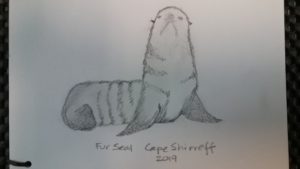 On Thursday, April 18, we awoke to see land for the first time in several days. The ship had arrived at Cape Shirreff and it was time for the seal research team to leave us. They will be spending the next 35-40 days at Shirreff Base on the island while they study leopard seals (we will pick them up on our way back, we promise!). You can see the huts of the base towards the left of the picture below. In addition to tagging the seals with electronic trackers to determine where they hunt for food and how long they swim/dive, they take measurements of the animal’s weight, length, girth, and respiration, and take samples of blood, saliva and poop. All of this is to help them learn about how these seals survive in the Antarctic. There is really very little known about leopard seals, despite their importance as a top predator in the Antarctic marine ecosystem.
On Thursday, April 18, we awoke to see land for the first time in several days. The ship had arrived at Cape Shirreff and it was time for the seal research team to leave us. They will be spending the next 35-40 days at Shirreff Base on the island while they study leopard seals (we will pick them up on our way back, we promise!). You can see the huts of the base towards the left of the picture below. In addition to tagging the seals with electronic trackers to determine where they hunt for food and how long they swim/dive, they take measurements of the animal’s weight, length, girth, and respiration, and take samples of blood, saliva and poop. All of this is to help them learn about how these seals survive in the Antarctic. There is really very little known about leopard seals, despite their importance as a top predator in the Antarctic marine ecosystem.
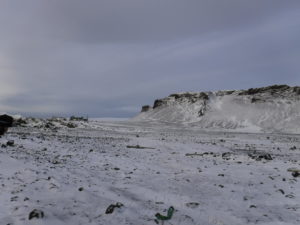
It’s too shallow near the island for the ship, and there isn’t a pier, so the supplies for the researchers are ferried to the beach by zodiac. This is a huge amount of work, and it requires a team effort by virtually everyone onboard. Some stayed on the ship to pack supplies into cargo nets that were then placed into the zodiacs using cranes. Others traveled (via zodiac) to the beach where we helped offload the supplies. The ship’s deck crew and technicians operated the cranes and the zodiacs, making sure that supplies and people made it safely off and on the ship.
Getting into the zodiac requires climbing down the side of the ship using a Jacob’s ladder. It’s a rope ladder with wooden steps, and it’s flexible, which makes it a challenge to use even in good weather. Climbing it while wearing many layers of clothing, including the big boots and a very bulky flotation coat, adds another level of difficulty. But, after several days on the ship, we were all ready for the challenge.
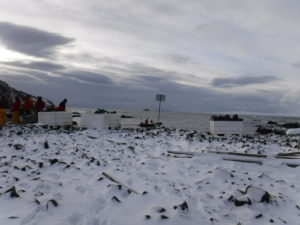
The opportunity to see a bit of the island and the camp was really special because it is a protected area and requires permitting to enter. In the image on the left above, you can see the chain of people bringing supplies up the beach, as well as the zodiac and then the Gould, in the distance. There are penguin breeding colonies (not near where we were) as well as other birds, and it’s home to a large number of Antarctic fur seals. It’s very rocky, and there is a lot of moss, although it’s covered in snow right now. There were many whale bones in the area, mostly smaller vertebrae and ribs. A few fur seals met us as we landed on the beach – they stuck around to watch what we were doing (see below), and occasionally rolled around to scratch themselves. We saw only one penguin, a gentoo, while we were unloading. It was also possible to hear the occasional boom of the nearby Urdoviza glacier as a piece broke off. In the picture of the glacier you can see dark lines within the ice. This is volcanic ash from previous eruptions in the area.
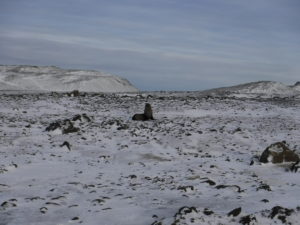
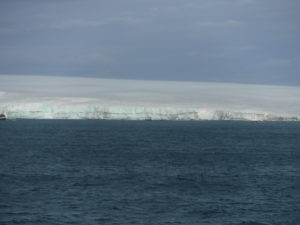
It was an exciting and physically demanding morning – we started at 8 am and finished around 11:30. Then it was time to head for the Gerlache Strait where the krill researchers were going to fish for … krill. Juvenile krill for their experiments at Palmer Station. I’ll tell you more about those next time, but if you are following the ship’s track using AIS or sailwx, you may have noticed that since last night it looks like we are pretty much in one place. We are – sort of. The links to the marine traffic sites are below.
https://www.sailwx.info/shiptrack/shipposition.phtml?call=WCX7445
https://www.marinetraffic.com/en/ais/details/ships/shipid:454309/mmsi:368138000/imo:9137337/vessel:LAURENCE_M_GOULD